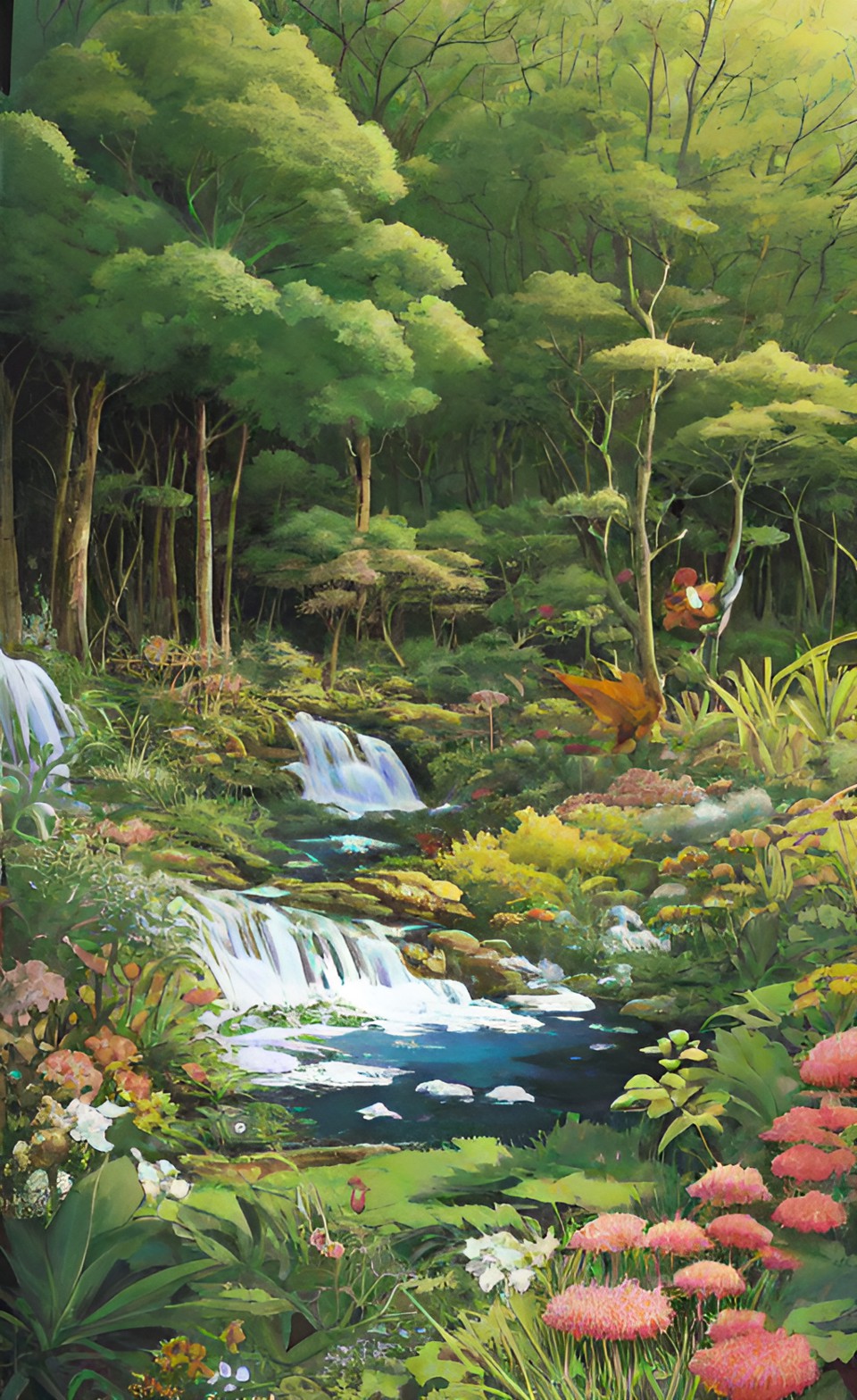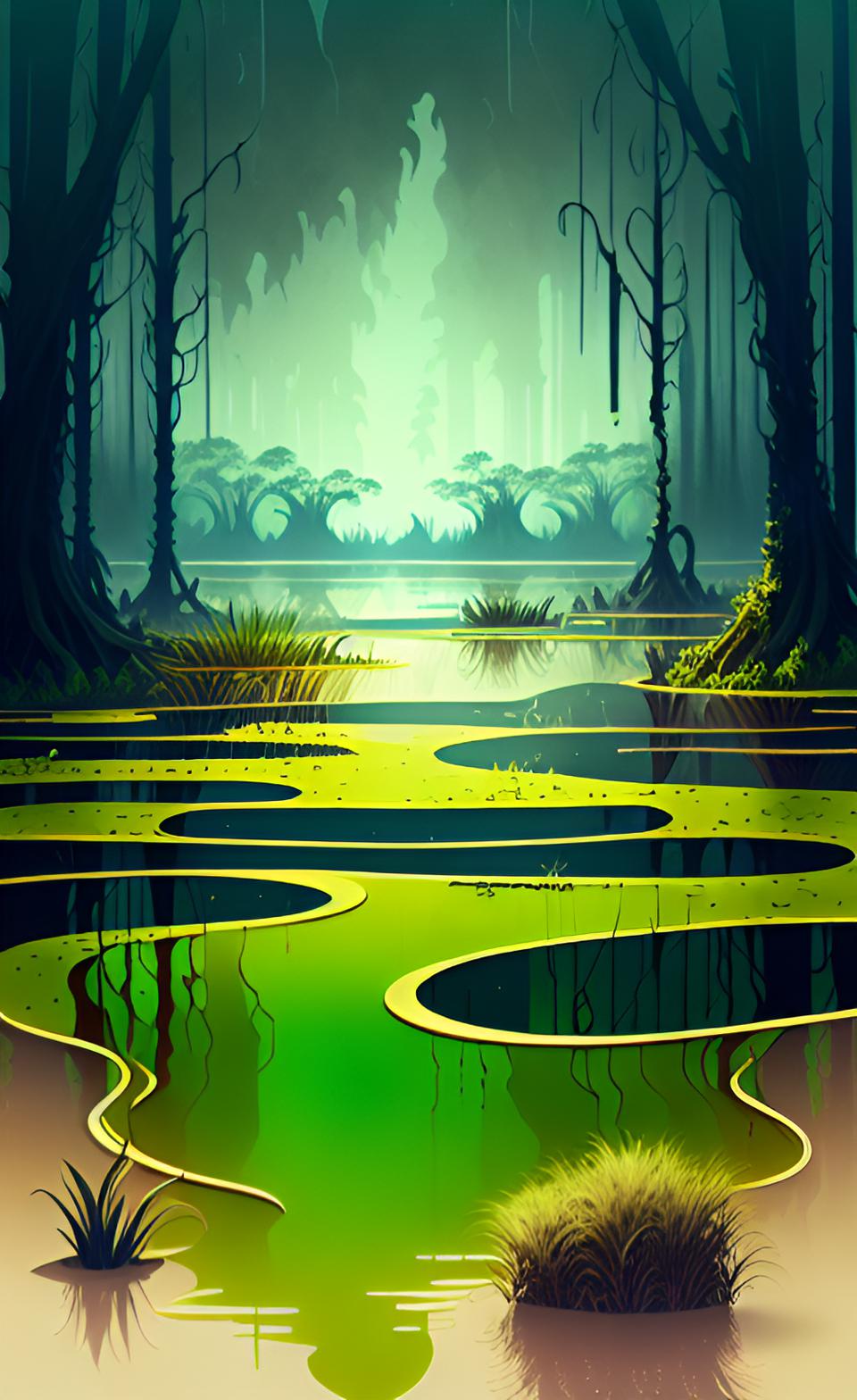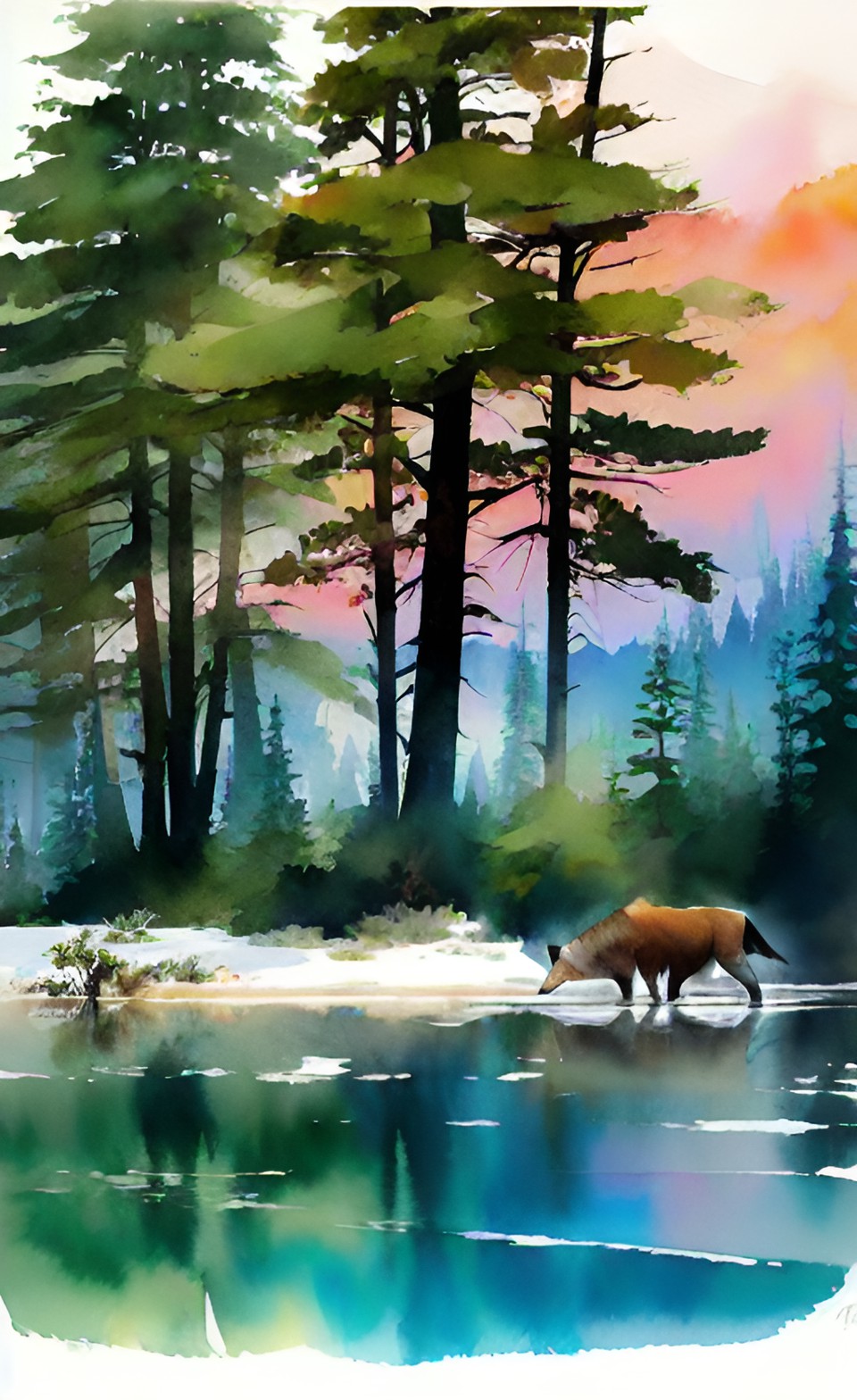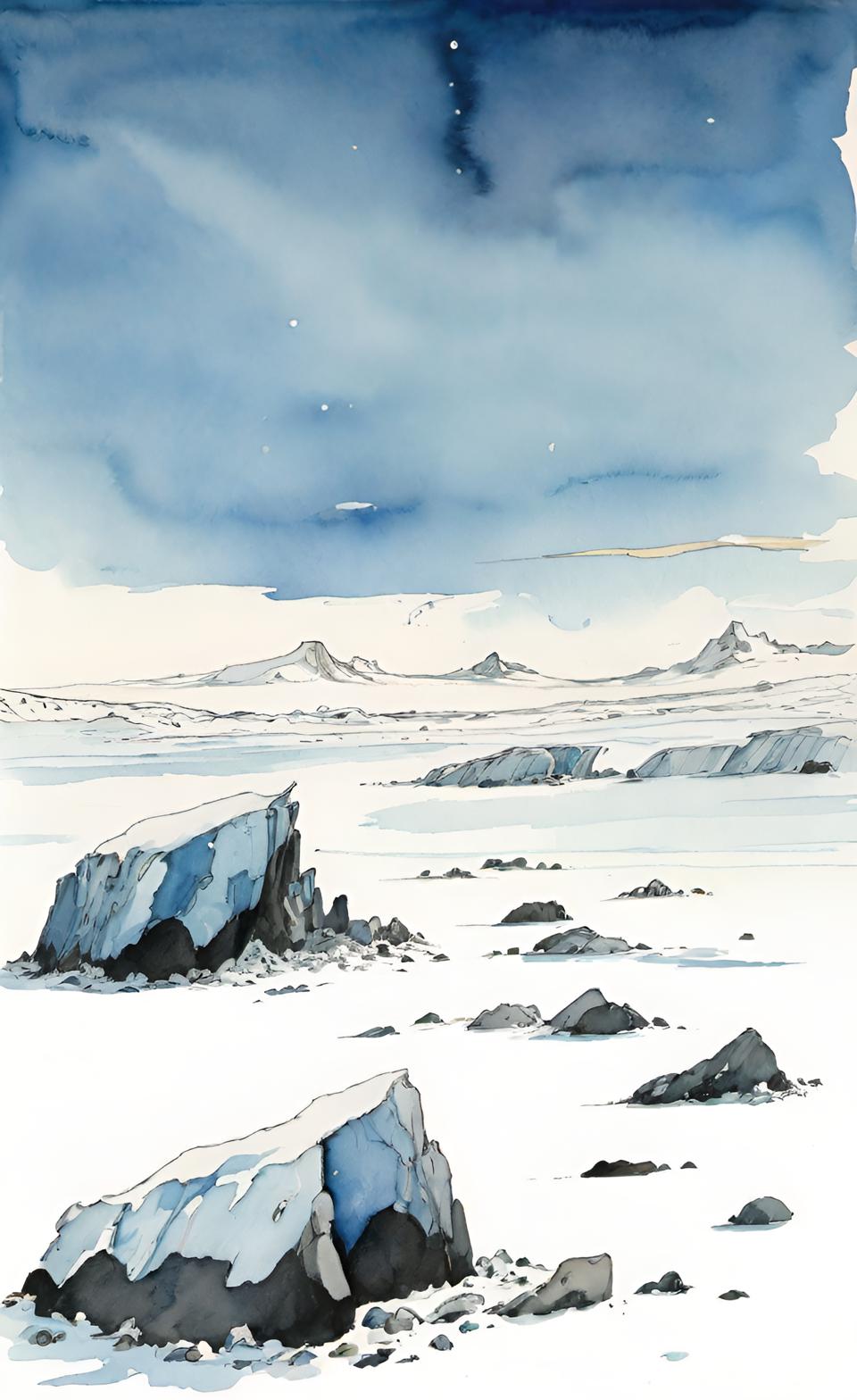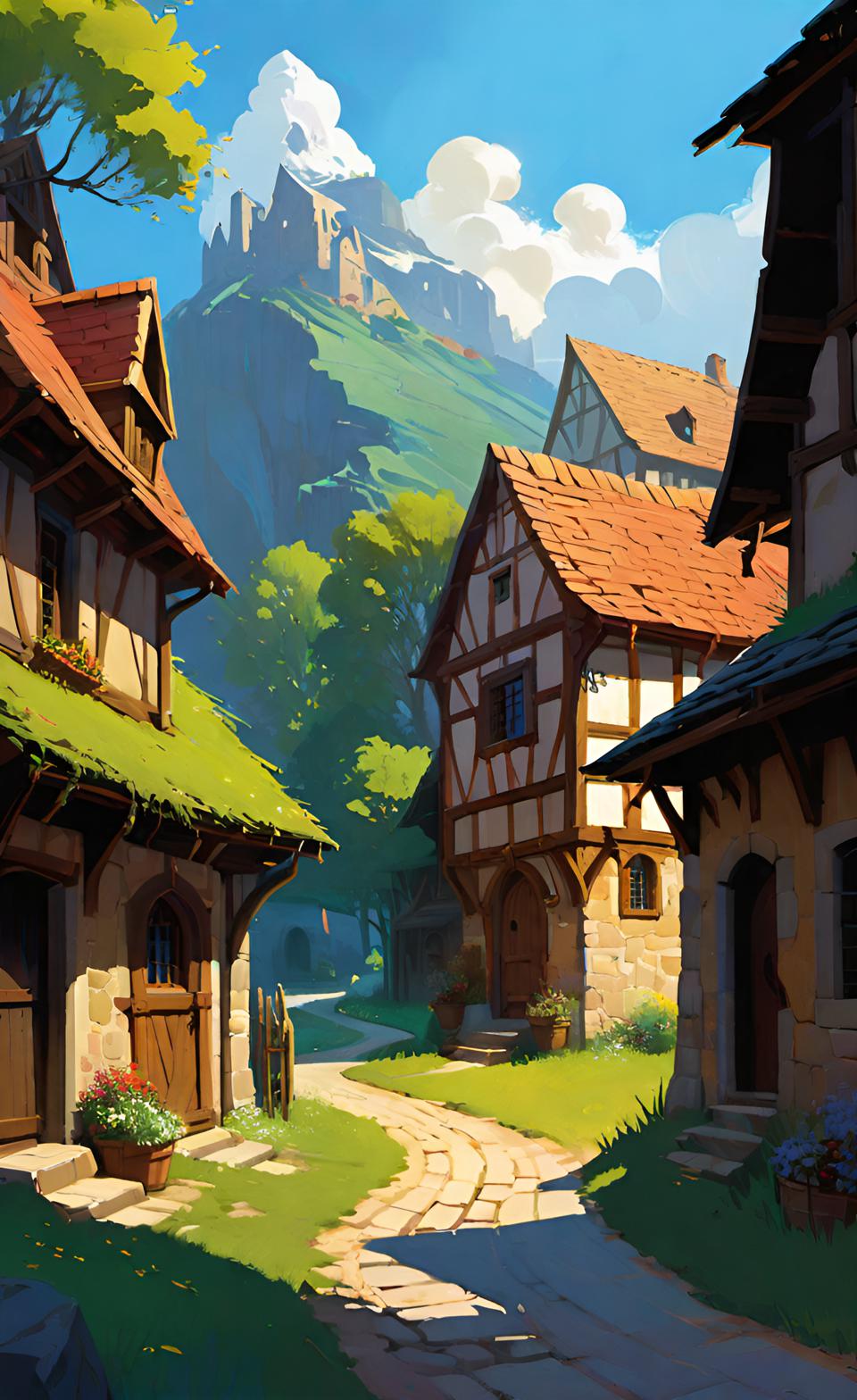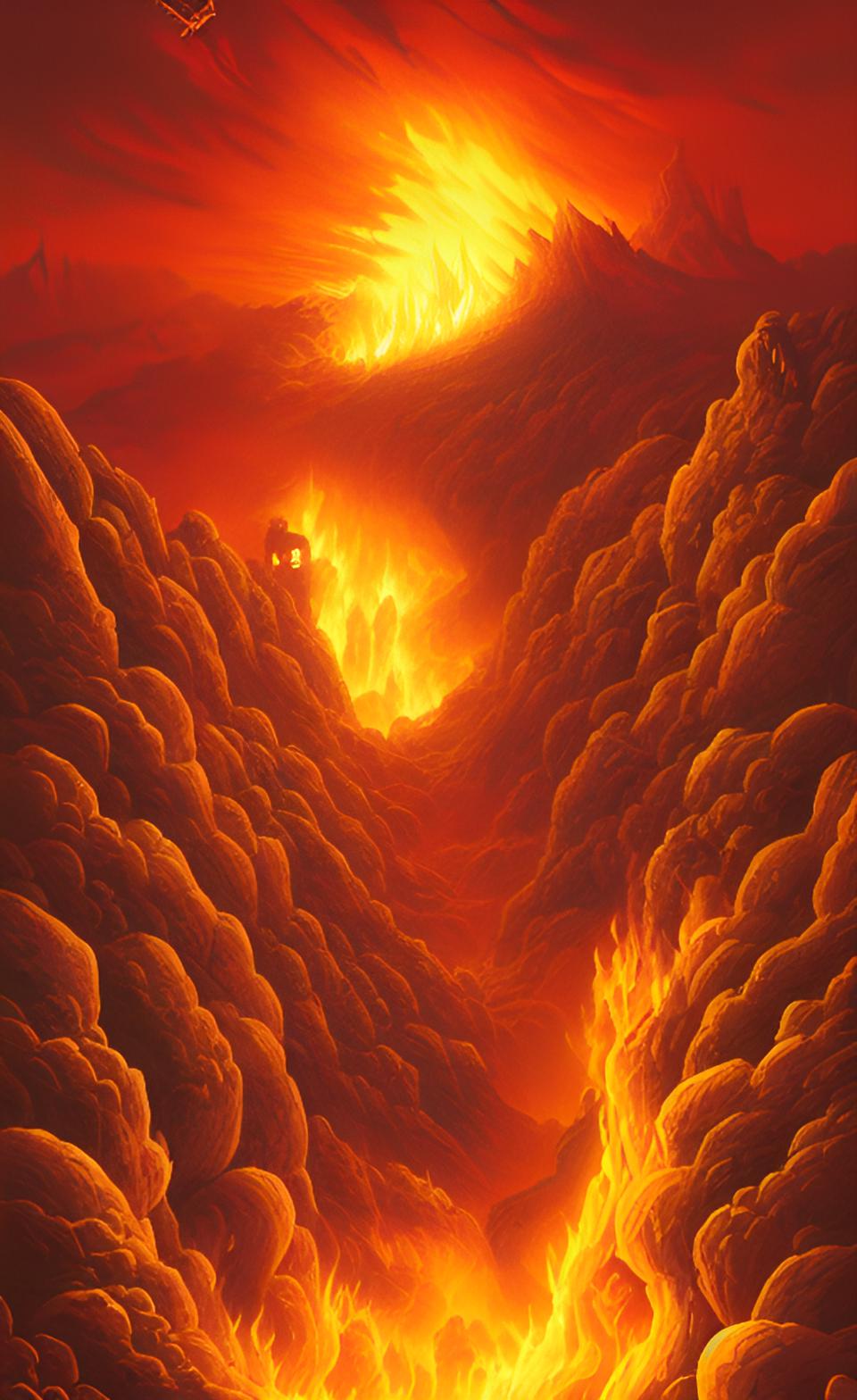Environmental Encounter Tables
Click on an environmental group above to view the encounter tables for that group.
Environment Groups:
The encounter tables exist inside environmental groups, each of which have their own page, linked above. There are a few types of more-generic tables which occur in multiple environmental groups.
Terrestrial Environments:
Terrestrial environment groups (pages) include climate-appropriate freshwater bodies which can be found within the environment, and climate-appropriate coasts and near-shore sea encounter tables which may border the environment. They all also include group-specific aerial encounter tables, cave encounter tables, and either the "Subterranean, mild" or "Subterranean, frigid" encounter tables.
Gehenna, Caves, and Subterranean environments:
What D&D calls the Underdark, I am calling Gehenna. This is a distinct, expansive, underground world. This is its own environmental group (page) with its own encounter tables, which are not duplicated in any other groups.
There are two different generic subterranean encounter tables, which are separate from, and unrelated to, Gehenna. The "Subterranean, mild" table is included in tropical and temperate terrestrial groups (pages), and the "Subterranean, frigid" table is included for subarctic and arctic terrestrial groups. These are intended to be more "natural", stand-alone, generic, underground habitats.
Every terrestrial group has its own cave encounter table. As you get deeper into a cave system, the environment becomes less related to the outside world, and you might consider switching to the appropriate subterranean encounter table (which is also included in the page for the habitat group) at some point during the cave crawl.
Mountains:
The Mountain habitat group (page) divides mountainous habitats by biomes, which are relative to elevation and climate.
For foothills, the Mountain page uses the Hills tables from the Desert, Grasslands, Forest, and Jungle pages.
Ascending a mountain, the next biomes encountered after the foothills are the Montane Forest, then the Montane Scrubland, and then the Glacial zone. These should be self-explanatory. Some creatures only inhabit mountain peaks, yet the peak of a mountain could be in any of these zones. Instead of dividing all of these zones into more subtables (that is, splitting each biome into one "peak" table and another "non-peak" table), my solution is to allow filtering out peak-only creatures from the encounter tables. See the "Filters" section below.
Aquatic environments:In the list of environmental groups above, there is one group (page) dedicated for freshwater and another dedicated to the seas. Most of the tables in these two groups are duplicated elsewhere, multiple times, in the appropriate terrestrial habitat groups. The tables which are not duplicated elsewhere are the Seas' euphotic, dysphotic, and aphotic tables.
Freshwater and saltwater environments are categorized by four types of climate, and then divided into three depth zones, which are based on sunlight penertration. The euphotic zone receives ample sunlight (the euphotic encounter tables conceptually include the surface of the lake/sea), the dysphotic zone receives twilight-levels of sunlight, and the aphotic zone receives little-to-no sunlight. For creatures which can only be found on the water's surface, the euphotic zones can be filtered to exclude surface-only creatures when the encounter takes place beneath the surface.
Similar to the need to filter out surface-only creatures when the encounter takes place in the euphotic zone but under the surface, some creatures only dwell on the sea floor, and the sea floor may be at any of the three depths. To filter out sea-floor only creatures when the encounter is not on the sea floor, apply the "benthic" filter.
Freshwater encounter tables include rivers for each climate, plus lakes divided by the three levels of sunlight penetration as described above. They do not include distinct lakeshore tables, but you can filter out lakeshore-dwelling creatures by toggling the "lake shore" filter.
The encounter tables for seas include coasts for each climate, and also add a "nearshore" table for each climate. The idea behind the nearshore category is that the euphotic habitation profile in the middle of the ocean is going to look different from the euphotic habitation profile of the ocean close to shore.
Filters:
The encounter tables include filter buttons. If any of the creatures in a table are filterable, then they are placed at the bottom of the table, under a filter button. When the text of a filter button has a strikethrough line, then the creatures which match that criteria are being excluded from the encounter tables. When there is not a strikethrough, then the creatures are included in the tables. The filters you set are persistent across all habitat tables. All filters are exclusion-based - when active (the text has a strikethrough), then the relevant creatures are being excluded. There are no include-only-these-creatures types of filters.
If a creature has multiple filters which are not active (remember, a non-active filter means that the creature is not being filtered out), then you will see a "0" for its die-roll result next to its entry on the table under the second and subsequent non-active filters. IOW, only the first non-filtered entry of a creature on the table will have a non-zero chance for being encountered. Otherwise, creatures with multiple non-active filters would have unwarranted extra chances of being encountered.
"Mountain peaks": Creatures which only inhabit the peaks of mountains will be filtered out when this is enabled. This is the alternative solution to creating separate tables for each montane biome: one for "peak", and one for "non-peak". The attribute of inhabiting only mountain peaks is defined in the creature's "environmental implications" section.
"Benthic": Aquatic environments have the same issue as mountains, but in the opposite direction. Some creatures only inhabit the floor of a lake or sea (some creatures remain close to the floor even if they have a swimming movement rate), but the floor can be at any of the three depth levels for which aquatic environments have tables. Turn this filter on or off depending on whether or not the encounter is on the floor of the body of water. The "Benthic" trait is defined in the creatures' "environmental implications" section including a value of "benthic dwelling".
"Lake shore": Leave this filter off (that is, nothing will be excluded) if you don't mind the encounter table determing for you that a lake is nearby, or if you have decided that a lake is nearby. Turn this filter on if you don't like the idea of the encounter tables dictating the presence of a lake, or if you have decided that there are no lakes nearby, or if the party is in a lake, but far from shore (most of the creatures affected by this filter appear in both terrestrial and aquatic tables). This attribute is defined in the creature's "environmental implications" section.
"Silly": Turning this filter on excludes all creatures with the "fun" tag from populating the tables.
"Purpose": Some creatures don't make sense to encounter without some greater-plan purpose behind them being there. This includes most constructs, and fiends like Erinyes and Imps. Turning on this filter excludes creatures which have "purpose" in their "environmental implications" section.
"Humanoid": Excludes creatures of type "humanoid" and "monstrous humanoid". Elves, I guess, are technically fey, so they aren't excluded. I might add them to this exclusion list, though.
"Land time forgot": Turning on this filter excludes creatures with the "dinosaur" tag from populating the tables.
Others filters: I am still adding and modifying filters, so the list here is probably out-of-date.Frequency categories:
Creatures fall into one of five frequency categories (per environment - their frequency may vary from one environment to another): common, uncommon, rare, very rare, unique. To use the encounter tables, the first of two rolls is to roll on a table to determine which of the categories to get a creature from. This table is right below the picture of the environment. (The "unique" category is excluded from this table, because I don't believe that unique creatures should be randomly encountered, and the odds would be so low anyway that it wouldn't be worth rolling for.) The second roll is on the frequency category table determined by the first roll, located to the right of the environment's picture.
The default ratios between the frequncy categories are defined as Common = 56%, Uncommon = 36%, Rare = 6%, Very Rare = 2%. If the creature lists for each of the categories had an equal number of creatures, then that would be the end of the story. But inequality between the lengths of the lists skews the intended frequency of the creatures within the lists. Creatures in relatively long lists (relative to the three other frequency categories for that environment) will be more rare than intended, and creatures in relatively short lists will be more common than intended. To look at this problem with extreme examples: If there is just one creature in the "common" list, then you're going to run into it for what seems like all of the time, while if your "very rare" list has twenty creatures in it, then the chance any one of those creatures has of being encountered is only 1/1000. There's no point in even including them in the table at that point.
To adjust for the problem described above, the odds of which frequency category table to roll on are weighted by the relative lengths of their list of creatures.
If you prefer that the category ditribution be flat, then click the button which says "weighted frequency category distribution", and it will toggle to "flat frequency category distribution"
In addition to how the frequency categories are applied based on creature count, (weighted vs flat), you can also change the ratios between the four frequency categories. There is a drop-down directly below the "frequency-category-distribution" button. There are four options here: "Mild", "Wild", "Uncanny", and "Fantastical", which slide the encounter odds increasingly from more-common to more-rare. "Wild" is the default. In the drop-down, each of the four wildness flavors tells you the ratio of Mild::Wild::Uncanny::Fantastical.
Guest Environment Tables
When I implement accounts for this site, then the idea is for each user to have a link to their own page in this section, where you may create your own encounter tables.
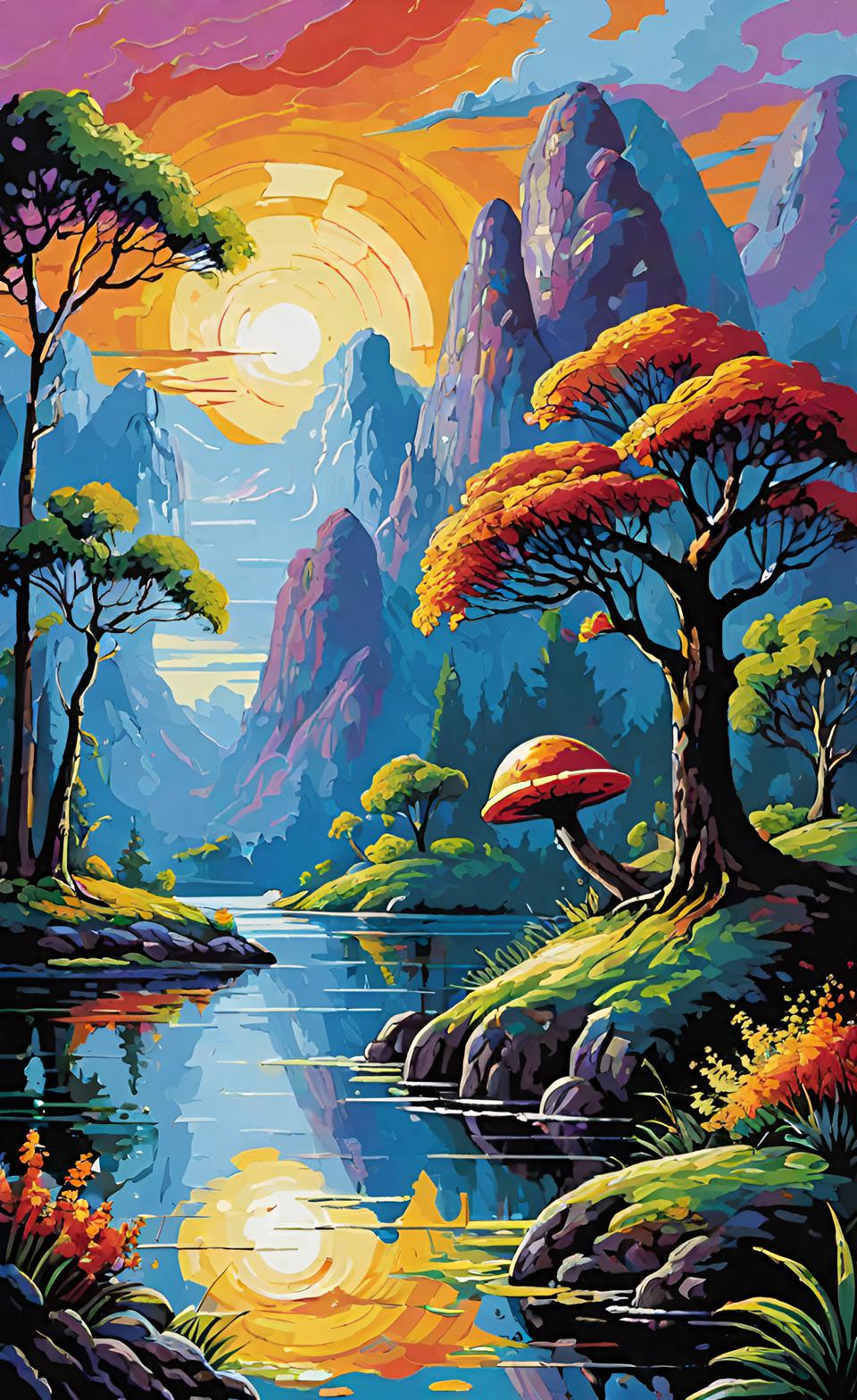 The Silver Realm |  Beyond The Far River |



